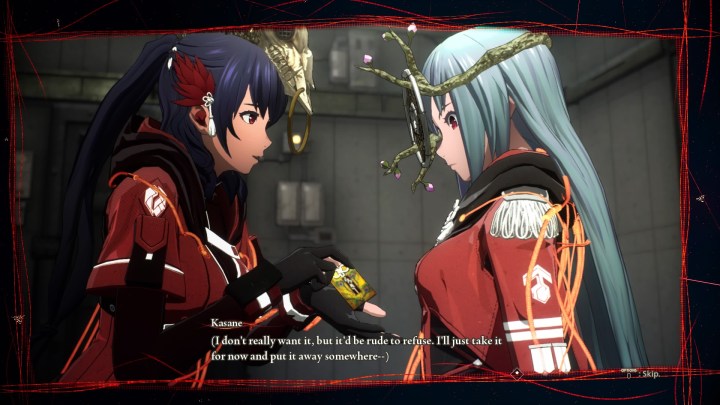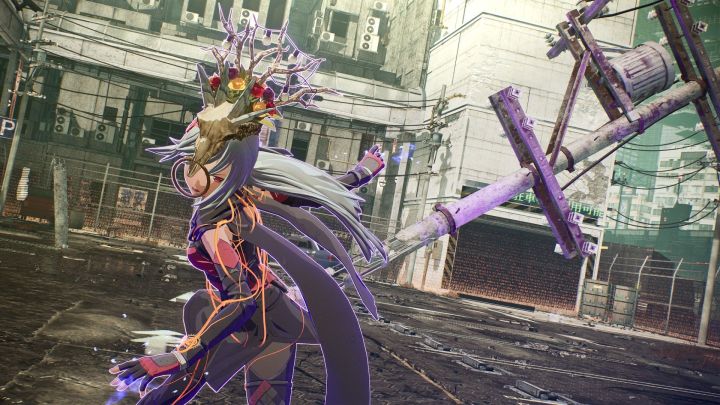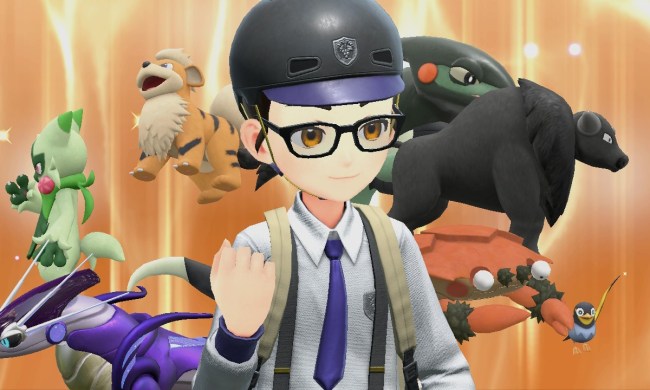It isn’t just the world and setting in Scarlet Nexus that are unique, but the gameplay and systems as well. Unlike the traditional JRPGs of old, this title is squarely set in a futuristic setting with a high emphasis on flashy action, equipment gathering, leveling up your character, building bonds, and more. This futuristic setting revolves around the new psionic hormone discovered within human brains that allow certain people to gain extraordinary powers but also saw the arrival of creatures called Others that hunger for brains.
You will take the role of one of two characters as part of the defense force against the Others, with aspirations of becoming a powerful psionic. Learning your powers and facing off against the deadly and twisted Others will be hard enough on its own, but Scarlet Nexus is just as much about surviving as it is about looking cool while doing it. Before you head out into the city of New Himuka to test out your flashy psychic abilities, read up on these beginner’s tips and tricks.
Further reading
- The best anime video games of all time
- The 10 best JRPGs of all time developed by Japanese studios
- The best Final Fantasy games, ranked from best to worst
Pick your character

The first real decision you need to make when starting up Scarlet Nexus is which protagonist you want to play as. However, the choice is more important than simply choosing whether you want to play as a male or female since each character is a unique character, both in terms of gameplay and story. Your choices are Yuito Sumeragi and Kasane Randall, and you should think about them more as separate campaigns rather than just different characters. To get the full experience and learn everything there is to know about the world and plot, you will want to play through both characters’ stories.
Yuito is a descendant of several key members of the OSF, the organization you will be part of that fights the Others. He fights with a katana and psychokinetic skills that complement a fast, aggressive melee-style player. Because he’s best suited to getting right up in the enemy’s faces, he is a bit more risky of a character, but if you have the skill to pull off his best combos, you can crush whatever enemy is in your way with stylish satisfaction. His defensive options are limited, so you’ll need to be prepared with healing items to replenish any lost health for mistakes. He’s your classic, action-focused attack option.
Kasane is something of a prodigy that the OSF recruited based on her skills. She likes to stay a bit further back from enemies to attack with her psychokinetic-controlled blades. This makes her a somewhat safer character, not having to put herself in harm’s way as much to deal damage. Also, while Yuito is built more for single-target damage and combos, Kasane’s attacks and combos have a wider range and can be used for crowd control more easily.
Because both characters are active at the same time, you will only interact with the other during specific moments, so most of the time, you won’t know what the other is experiencing. That all being said, there’s no downside to playing one or the other first, and in fact, you may even want to try both out before making your choice. Each character has a prologue chapter that is relatively short and does a good job of introducing you to their characters. Feel free to play them both — each character will have their own save file, so you won’t have to worry about redoing anything either way — and then decide which one you want to start off with.
Manage your equipment, materials, and money
As much as combat is the focal point in Scarlet Nexus, it is still an RPG at heart. That means equipment, materials, and currency are going to be important if you want to keep up with the game’s difficulty curve. As you play, you will pick up plenty of new gear that you will want to compare and equip as you go on to always have the best equipment that’s available. Plus, you have more than just your main character to worry about, too. Companions need to have their equipment managed as well. Naturally, you should always prioritize yourself first. Companions aren’t going to ever be that big of a difference, but every little bit helps.
In terms of weapons, you can buy them if there’s one you’re really interested in, but the easiest and cheapest way to get them is by taking on side quests. Even if the weapon reward isn’t great, they’re usually at least a bit better than what you have. Keep an eye out for any NPC with a quest marker placed on them to grab a side quest, even if you don’t intend on doing it right away. You can always do them later on.
Aside from finding new items, always check in at the shop whenever you have the opportunity. They will get new stock in all the time, such as armor and weapons, and even get some items in that you’ll absolutely want to keep an eye out for. One of the best that you should always look for is an item that increases your maximum health or raises your resistance. To buy these items, you’ll need materials that you find in the main levels. Most may seem fairly linear on the surface, but always keep an eye out for extra little side paths, hidden areas, and secret spots on the map that you may not be able to see right away for extra currency. They will show up as white glitches or green cubes. Trade-in materials at the shop for special items that you can only purchase with materials.
Finally, to save money, always exchange items at the shop whenever possible. Again, materials aren’t good for anything except exchanging, so dump them all each time you get to a shop.
Prioritize bonds

Regardless of which character you pick at the offset, your character will meet and team up with plenty of other people during your campaign through Scarlet Nexus. These characters are more than just artificial intelligence (A.I.) that follow you around, deal some extra damage, and offer some lines of dialogue now and then. There is an entire bond system here that incentivizes you to build up more meaningful relationships that will, in turn, make your party members more effective in battle. There are several ways you can increase your bond with different characters, and you should pay attention and attempt to do them all.
Look out for special bonding missions you can take on during the standby phases of the game. While in the hideout, you can do many things, such as fast travel, heal up, buy items, and talk to various characters. Make sure you talk to everyone to see if there are special bond missions that can be taken on to get to know them more. Even if you don’t particularly like or care about that character, these missions are still worth taking on to raise your bond levels with them. The higher your bond level, the more effective your SAS (more on that later) will be, plus they will help out more in combat. These missions are quick and easy, so do them all right away.
Not all bond missions are triggered just by talking to people in the hideout, though. You also need to remember to check your messages since some of these missions are only activated by reading messages from certain NPCs. These are easy to miss or completely forget about, so make a habit of going through your inbox when you get to a standby phase in the hideout. Most won’t amount to much, but some you can reply to, also increasing your bond levels and starting bond missions.
Finally, another popular mechanic in JRPGs with bonding systems, Scarlet Nexus allows you to buy and give gifts to your fellow characters to give your bond a boost. Again, during the standby phases in the hideout, check out the shop for gifts you can buy. Thankfully, the game takes out the guesswork of who will like what since you can see a little icon next to each gift of each character’s portrait and a number of hearts on it. The more hearts, the more that character will like that gift. If you’ve got the cash and materials to spend, gifts are a great way to quickly raise your bond levels.
Practice combat basics early
Fighting is the bread and butter of Scarlet Nexus, so getting some practice in will go a long way. Sitting somewhere between a traditional hack-and-slash game and a more technical character action game, there are plenty of advanced moves you can learn if you put in the time. The best place to get a grip on how all the systems work, such as rush follow-up attacks and psychokinesis follow-up attacks, is in the tutorial stage right at the beginning of the game. You can stay here as long as you want to make sure you can reliably pull off these moves in a safe environment.
You’ll know when to trigger one of these follow-up attacks when the game slows time down after a successful combo or psychokinesis attack. Whichever type triggered the slowdown, the follow-up should be the opposite. So, if you hit a psychokinesis attack, then you’d want to do a rush follow-up attack for a ton of extra damage. As you level up, you can also perform more than one follow-up attack in a row, making this one of the most important — and damaging — skills you can learn.
Learn the SAS
So, you’ve got your basics of combat down and are leveling up your bonds. What’s the payoff? The Struggle Arms System, aka SAS. What this system does is allow your character to take on the power of your teammate and add it to your own in a fight. For example, some teammates have electrokinesis, an electric elemental ability, which you can absorb and then make your melee strikes deal electrical bonus damage. The SAS runs on a timer as soon as you activate it, which can be seen on the bottom-right of the screen, so trigger it at smart moments, like at the beginning of difficult encounters, to not let it go to waste. The gauge will refill over time, too, so using it early on in a long fight could mean you get a second use before the battle is done.
Experiment with what bonuses you get for using the SAS with different companions but also what enemies are weak to what so you can maximize your damage by taking on the right powers for each situation.
Get more plug-in slots

Plug-ins are defensive items that you and your team can equip for various buffs. These range in what they do but are never a waste to get. For example, some will give you a flat increase in defense or power, while others can increase your health or the amount of XP and money you earn. Your character can equip up to three plug-ins, but you will need to unlock additional slots for your main character and teammates. Starting out with just one, to get more slots for your main character, you will need to unlock them in the skill tree via the support branch. The nodes you will want to reach are called Additional Plug-in Equip Slot 1 and Additional Plug-in Equip Slot 2. To unlock more, head to the shop and go to the plug-in parallelization program. Here, you can buy plug-in slots for your teammates, but they aren’t automatically applied. You need to give these items to the character as a gift before the slot will actually unlock.
Plug-ins can be earned in multiple ways, exactly like other types of gear in Scarlet Nexus. You’ll find plenty as loot throughout the game dropping from enemies, as well as quest rewards and buying them from the shop. You can also craft new plug-ins yourself. By the late game, these plug-ins will be giving you massive bonuses, so you’ll be glad to have as many slots to play with as possible.



